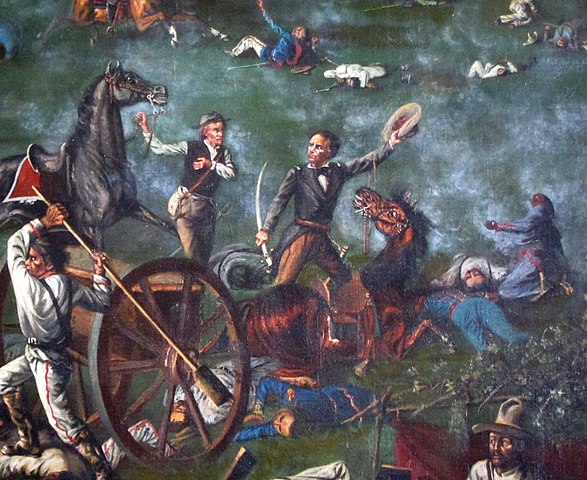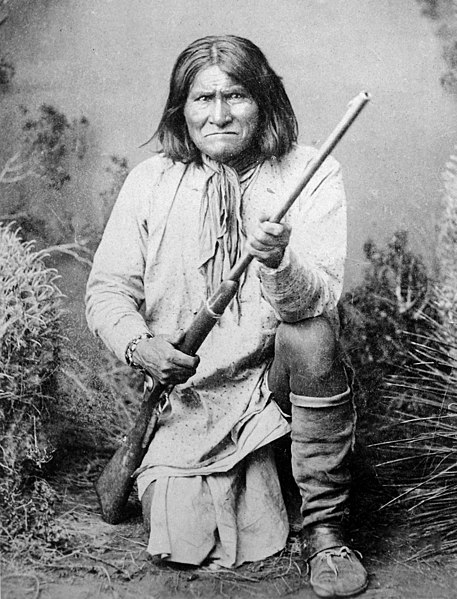In the tapestry of history, certain dates stand out as markers of change, tragedy, innovation, and conflict. March 27 is one such date, rich with events that span the spectrum of human experience.
From groundbreaking explorations and devastating disasters to pivotal political changes and groundbreaking advancements, this day has witnessed moments that have not only shaped the immediate world of those who lived through them but have also left an indelible mark on the course of history.
This article delves into twenty significant events that occurred on March 27, offering insights into the impact they had on their era and how they continue to influence us today.
March 27th Events in History
1309 – The city of Valencia is besieged by the forces of James II of Aragon, who captures it later in the year
In 1309, the city of Valencia, on the eastern coast of present-day Spain, was besieged by the forces of James II of Aragon. This was part of James II’s campaign to expand his territories within the Iberian Peninsula.
Also Read: March 26 – On this Day in History
The siege was a significant military operation during the period of the Reconquista, a series of campaigns by Christian states to recapture territory taken by Muslims.
The successful siege and subsequent capture of Valencia were pivotal for James II, as it significantly expanded his realm and influence in the Mediterranean region.
1513 – Spanish explorer Juan Ponce de León sights land he calls “Florida” (Spanish for “land of flowers”)
On March 27, 1513, Spanish explorer Juan Ponce de León, while searching for the mythical Fountain of Youth, sighted land he named “La Florida,” meaning “land of flowers.” This event marked the first documented European arrival in what is now the continental United States.
Also Read: March 28th Events in History
Ponce de León’s discovery led to further exploration and eventual colonization of Florida by the Spanish, significantly impacting the history and cultural development of the region.

1625 – Charles I becomes King of England, Scotland, and Ireland, simultaneously ruling the three kingdoms until his execution in 1649
Charles I ascended to the thrones of England, Scotland, and Ireland on March 27, 1625, succeeding his father, James I. His reign was marked by religious conflicts, struggles with Parliament over power and finance, and civil unrest, which eventually led to the English Civil War.
Charles’s attempts to govern without Parliament and to impose Anglican practices on the Presbyterian Church of Scotland were deeply unpopular. His reign culminated in his trial and execution in 1649, a watershed moment in British history that temporarily abolished the monarchy.
1794 – The United States Government establishes a permanent navy and authorizes the building of six frigates
On March 27, 1794, in response to threats from Barbary pirates against American merchant ships, the U.S. Congress passed the Naval Act of 1794.
This act authorized the construction of six frigates and effectively marked the establishment of the United States Navy as a permanent force.
This decision was instrumental in protecting U.S. interests at sea and played a crucial role in the country’s early naval engagements and subsequent growth as a maritime power.
1814 – War of the Sixth Coalition: The Battle of Horseshoe Bend concludes with a decisive victory for the United States, effectively ending the Creek War
The Battle of Horseshoe Bend, fought on March 27, 1814, was part of the Creek War (1813-1814), which itself was intertwined with the larger conflict of the War of 1812. General Andrew Jackson led U.S. forces against the “Red Sticks,” a faction of the Creek Native American tribe. The battle took place near present-day Dadeville, Alabama, on a bend of the Tallapoosa River.
Jackson’s decisive victory broke the power of the Creek Nation, leading to the cession of millions of acres of land to the United States and significantly affecting the lives and territories of Native Americans in the Southeast.
1836 – Mexican forces capture Goliad, Texas, and execute over 400 Texan prisoners the following day in the Goliad Massacre
The Goliad Massacre was a tragic event during the Texas Revolution, where Mexican forces executed over 400 Texan prisoners on March 27, 1836. This followed the Battle of Coleto, where Texan forces, commanded by Colonel James Fannin, were surrounded and ultimately surrendered with the expectation of being treated as prisoners of war.
However, under orders from General Antonio López de Santa Anna, the Mexican president and commander, these prisoners were marched to Goliad and executed, violating contemporary practices of war. The Goliad Massacre, alongside the fall of the Alamo, became a rallying cry for Texan forces with the battle cry “Remember the Alamo! Remember Goliad!”

1851 – The first reported sighting of the Yosemite Valley by Europeans occurs
On March 27, 1851, a group of European Americans led by Dr. Lafayette Bunnell, part of the Mariposa Battalion, became the first non-Indigenous people to enter the Yosemite Valley. This discovery occurred during the California Gold Rush and amid conflicts between Native American tribes and settlers.
Bunnell was struck by the valley’s beauty and named it “Yosemite” after misunderstanding the local Native American tribe’s name. The discovery led to the eventual establishment of Yosemite National Park in 1890, preserving its spectacular scenery and natural wonders for future generations.
1866 – President Andrew Johnson vetoes the civil rights bill, later becoming the first major legislation to become law over presidential veto
President Andrew Johnson vetoed the Civil Rights Bill on March 27, 1866, which was designed to protect the rights of the newly freed African American slaves by granting them citizenship and forbidding states from enacting discriminatory laws known as Black Codes.
Johnson’s veto was seen as a significant setback for Reconstruction efforts and civil rights. However, in a landmark moment for the U.S. Congress, it mustered the necessary two-thirds majority in both the House and Senate to override the presidential veto, marking the first major legislation in American history to become law in this manner.
This event underscored the deep divisions within the United States regarding Reconstruction and civil rights for African Americans.
1886 – Geronimo, the Apache leader, surrenders to the U.S. Army, ending the main phase of the Apache Wars
Geronimo, a prominent leader of the Apache, surrendered to U.S. forces on March 27, 1886, in Skeleton Canyon, Arizona, after a prolonged pursuit that had captured the American public’s imagination.
His surrender marked the end of the Apache Wars, a series of conflicts between the Apache tribes and the United States in the Southwest. Geronimo’s surrender was significant because he was the last Native American leader to formally give in to U.S. forces, symbolizing the end of an era of Native American resistance in the Southwest.
Following his surrender, Geronimo and many of his followers were detained as prisoners of war and spent many years in captivity.

1915 – Typhoid Mary, the first healthy carrier of disease ever identified in the United States, is put in quarantine, where she spends the rest of her life
Mary Mallon, known as “Typhoid Mary,” was the first identified healthy carrier of typhoid fever in the United States. She was a cook who, unknowingly infected with the bacteria that causes typhoid fever, was linked to multiple outbreaks in New York City. Despite showing no symptoms herself, she was found to have infected dozens of people, with some cases resulting in death.
On March 27, 1915, after a second series of infections were traced back to her, Mallon was apprehended and quarantined for life on North Brother Island in New York’s East River. Her case raised significant ethical, legal, and public health issues regarding carrier states and the limits of individual rights for the sake of public health.
1933 – Japan officially withdraws from the League of Nations
On March 27, 1933, Japan officially announced its withdrawal from the League of Nations, the international organization established after World War I to promote peace and cooperation between countries. This decision came after the League’s Assembly adopted a report blaming Japan for the invasion of Manchuria, a region in northeastern China.
Japan’s occupation of Manchuria, which began in 1931, was seen as an act of aggression that violated the League’s principles. Japan’s withdrawal marked a significant moment of isolationism from international diplomacy and underscored the limitations of the League of Nations in enforcing peace and preventing aggression.
1945 – World War II: The last German V-2 rocket falls on England, marking the end of Germany’s V-2 attacks
The V-2 rocket was the world’s first long-range guided ballistic missile, developed by Nazi Germany during World War II. On March 27, 1945, the last of these rockets to fall on England struck Orpington, Kent. The V-2 attacks caused significant destruction and civilian casualties in London and other parts of England.
The development and deployment of the V-2 rocket marked a significant advancement in military technology, laying the groundwork for post-war space exploration and missile development. The end of the V-2 attacks was a relief to the British public and signaled the nearing end of World War II in Europe.
1958 – Nikita Khrushchev becomes Premier of the Soviet Union, following the death of Joseph Stalin
After the death of Joseph Stalin in 1953, Nikita Khrushchev emerged as a leading figure in the Soviet Union, eventually consolidating power and becoming Premier on March 27, 1958.
Khrushchev’s leadership was marked by efforts to de-Stalinize the Soviet Union, including denouncing Stalin’s purges and promoting more liberal policies in culture and international diplomacy.
His tenure also featured significant moments of the Cold War, including the Cuban Missile Crisis, the construction of the Berlin Wall, and the launch of Sputnik, the first artificial Earth satellite. Khrushchev’s policies and leadership style significantly impacted Soviet society and the Cold War dynamics.
1964 – The Good Friday Earthquake, the most powerful earthquake in U.S. history at a magnitude of 9.2, strikes Southcentral Alaska, causing widespread destruction
The most powerful earthquake in U.S. history, with a magnitude of 9.2, struck Southcentral Alaska on Good Friday, March 27, 1964. The earthquake and the subsequent tsunamis caused widespread destruction, particularly in Anchorage, and resulted in the loss of 131 lives.
The quake caused significant geological changes, including sinking land, rising coastlines, and triggering landslides. This event profoundly impacted Alaska’s infrastructure and led to changes in building codes and earthquake preparedness strategies, both in Alaska and across the United States.
1976 – The Washington Metro opens to the public in Washington, D.C
The Washington Metro, known officially as the Metrorail, opened its first phase to the public on March 27, 1976. This significant event marked the culmination of decades of planning and construction to provide the Washington, D.C., area with a modern rapid transit system. The initial segment connected five stations.
Since then, the Metro has expanded significantly, becoming a vital part of the region’s transportation infrastructure. The system’s design, featuring iconic concrete vaulted stations, has been celebrated for its architectural significance and has played a crucial role in the daily commute of millions and the overall development of the Washington, D.C., metropolitan area.
1977 – The Tenerife airport disaster occurs, the deadliest aviation accident in history, with 583 fatalities
The Tenerife Airport Disaster occurred on March 27, 1977, and remains the deadliest aviation accident in history. It happened at Los Rodeos Airport (now Tenerife North Airport) on the Spanish island of Tenerife, Canary Islands.
A tragic set of circumstances, including dense fog, a crowded airport due to a bombing at another location, and critical miscommunications, led to the collision of two Boeing 747s on the runway. The planes involved were operated by Pan American World Airways and KLM Royal Dutch Airlines. The crash resulted in 583 deaths.
This catastrophic event led to widespread changes in aviation safety protocols, including improvements in communication standards and the implementation of more rigorous cockpit procedures.
1980 – The Norwegian oil platform Alexander L. Kielland collapses in the North Sea, killing 123 of its crew of 212
The Alexander L. Kielland, a Norwegian semi-submersible drilling rig, capsized in the North Sea on March 27, 1980, due to a structural failure. This disaster claimed the lives of 123 of the 212 people on board, making it one of the deadliest offshore oil platform accidents in history.
The platform was used as temporary housing for workers at the nearby Edda oil field and was nearing the end of its deployment. The tragedy highlighted the importance of safety standards in offshore operations, leading to significant changes in safety regulations and practices in the oil and gas industry to prevent similar incidents.
1993 – Jiang Zemin is appointed President of the People’s Republic of China
Jiang Zemin was appointed President of the People’s Republic of China on March 27, 1993, consolidating his power as the paramount leader of China. Jiang’s presidency marked a period of rapid economic reform and growth, as well as increased openness to the global economy, while maintaining strict political control.
His leadership saw China’s entry into the World Trade Organization (WTO) and the return of Hong Kong from British to Chinese sovereignty in 1997. Jiang’s tenure was also characterized by a strong emphasis on technological development and education, setting the stage for China’s emergence as a major global economic power.
2002 – A suicide bomber kills 30 at a Passover seder in Netanya, Israel
On March 27, 2002, a suicide bomber detonated himself at a hotel in Netanya, Israel, during a Passover seder, a ritual feast that marks the beginning of the Jewish holiday of Passover.
The attack, carried out by a Palestinian militant, killed 30 people and injured over 140, making it one of the deadliest attacks during the Second Intifada, a period of intensified Israeli-Palestinian violence.
The massacre led to widespread international condemnation and prompted Israel to launch Operation Defensive Shield, a large-scale military operation in the West Bank aimed at dismantling Palestinian militant networks.
2013 – Canada becomes the first country to withdraw from the United Nations Convention to Combat Desertification
On March 27, 2013, Canada became the first country to withdraw from the United Nations Convention to Combat Desertification (UNCCD), an international agreement aiming to address desertification, land degradation, and drought.
The Canadian government cited inefficiency and a lack of meaningful outcomes from the convention as reasons for its withdrawal. This move was met with criticism from environmental groups and some international commentators, who viewed it as a step back from global efforts to combat environmental degradation.
Canada’s withdrawal from the UNCCD was seen by many as part of a broader shift in its environmental and international development policies during that period.
